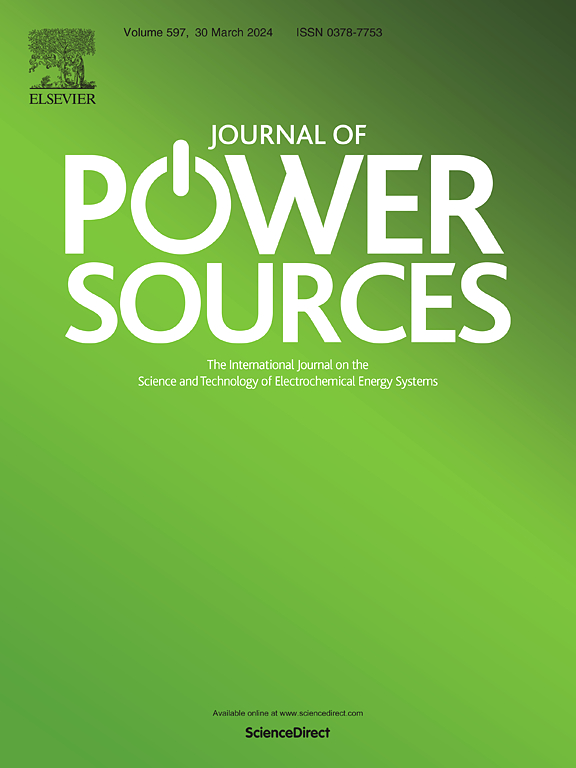Enhanced output performance of paper based fuel cells with multiple electrodes
IF 8.1
2区 工程技术
Q1 CHEMISTRY, PHYSICAL
引用次数: 0
Abstract
Paper-based fuel cells have garnered significant attention owing to their cost-effectiveness and portability. Nevertheless, the fuel utilization rate remains significantly low, and there are lingering concerns regarding the accuracy of numerical simulation models. Additionally, the influence of wetting processes on the transient performance of the cell has been understudied. This work models and analyzes the comprehensive process, encompassing mass transfer, chemical reactions, and electrical conversion. We utilize transient calculations to assess the corresponding liquid flow and voltage drop, while steady-state calculations are employed to analyze the polarization curve and maximum power density. Furthermore, we propose a novel architecture featuring multiple electrodes to sort out the issue of fuel utilization efficiency. The results suggest that the concentration distribution of oxygen and carbon dioxide impacts cellular performance. Besides, an appropriate multi-electrode configuration can mitigate fuel mixing, thereby significantly enhancing fuel utilization efficiency and maximum output power. Compared to single-electrode fuel cells, the maximum fuel utilization rate of four-electrode cells has increased from 0.461 % to 1.451 %, while the maximum output power has surged from 0.49 mW to 1.89 mW. The model and structural design present herein offer valuable insights for the future development of paper-based fuel cells.

求助全文
约1分钟内获得全文
求助全文
来源期刊

Journal of Power Sources
工程技术-电化学
CiteScore
16.40
自引率
6.50%
发文量
1249
审稿时长
36 days
期刊介绍:
The Journal of Power Sources is a publication catering to researchers and technologists interested in various aspects of the science, technology, and applications of electrochemical power sources. It covers original research and reviews on primary and secondary batteries, fuel cells, supercapacitors, and photo-electrochemical cells.
Topics considered include the research, development and applications of nanomaterials and novel componentry for these devices. Examples of applications of these electrochemical power sources include:
• Portable electronics
• Electric and Hybrid Electric Vehicles
• Uninterruptible Power Supply (UPS) systems
• Storage of renewable energy
• Satellites and deep space probes
• Boats and ships, drones and aircrafts
• Wearable energy storage systems
 求助内容:
求助内容: 应助结果提醒方式:
应助结果提醒方式:


